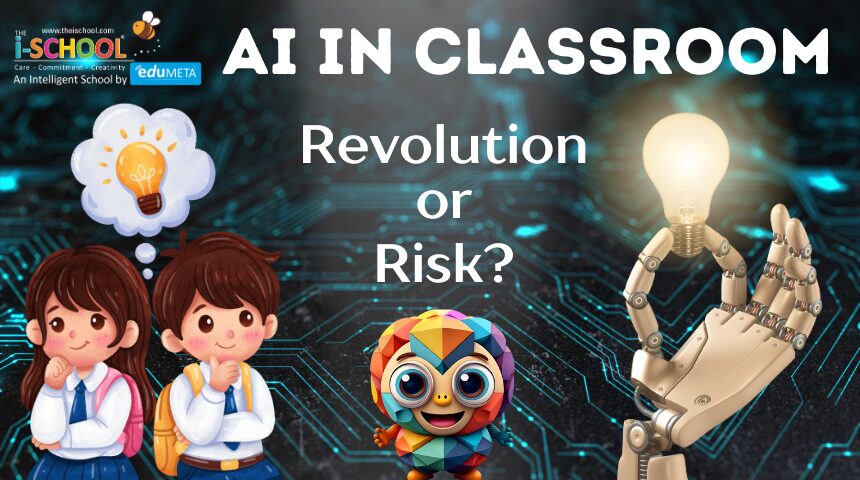AI in the Classroom: Revolution or Risk?

Artificial Intelligence (AI) has rapidly entered our daily lives, from smart assistants to personalized shopping suggestions. But now, AI is making its way into the classroom too. For some, it feels like an educational revolution. For others, it raises serious questions about risks and readiness.
So, is AI in education a game-changer or a gamble? Let’s explore.
The Revolution
How AI is Transforming Classrooms
1. Personalized Learning Paths
Every child learns differently. With AI, schools can create customized lesson plans that adapt to each student’s pace, strengths, and weaknesses. No more “one-size-fits-all” teaching.
2. Smart Assessment Tools
Instead of waiting for end-of-term exams, AI-driven systems can track progress daily, identify gaps, and offer instant feedback; helping teachers intervene at the right time.
3. Virtual Teaching Assistants
AI-powered bots can answer routine questions, check assignments, and free up teachers to focus on building real human connections with students.
4. Access Beyond Borders
AI-enabled platforms make quality education accessible anywhere; bridging gaps for students in rural or underserved areas.
👉 Clearly, AI holds the power to redefine the classroom experience and unlock potential like never before.
The Risk
Where Do We Draw the Line?
1. Over-Reliance on Technology
If children get too dependent on AI for answers, will their curiosity and problem-solving skills shrink?
2. Privacy Concerns
AI collects and analyzes massive amounts of student data. Are schools fully equipped to safeguard sensitive information?
3. The Human Touch
A warm smile, encouragement, or gentle guidance, no machine can truly replace the emotional intelligence of a teacher.
4. Inequality in Access
While some schools may integrate cutting-edge AI, others may struggle with infrastructure, widening the education gap.
👉 The risks are real, and they remind us that education must remain human at its core.
Striking the Balance
AI in the classroom isn’t simply about choosing between revolution or risk, it’s about balance. When used wisely:
- Teachers can save time on repetitive tasks.
- Students can enjoy a tailored learning journey.
- Schools can prepare children for a tech-driven future.
But this balance demands responsible use, strong ethics, and continuous teacher involvement.
Final Thoughts
AI is neither a magic wand nor a monster. It’s a tool. And like any tool, its impact depends on how we use it. If educators embrace AI thoughtfully blending technology with human empathy, we can create classrooms that are innovative, inclusive, and inspiring.
At eduMETA THE i-SCHOOL, we believe technology should support, not replace, human teaching. Our approach ensures children enjoy the benefits of smart learning while growing in creativity, compassion, and confidence.
